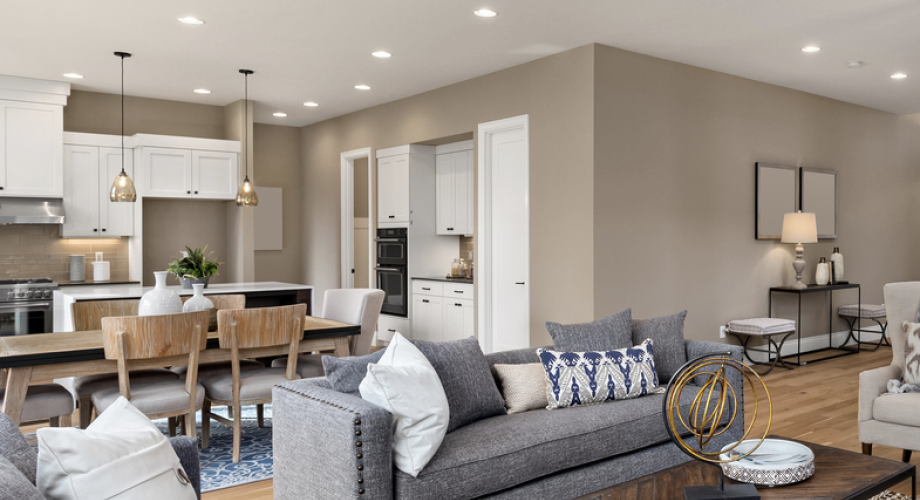Q: I have a building with studio units that sport modern LED pot lights in the ceiling. The issue I’m having is the color of the lighting—the lights are warm yellow and take away from the modern feel I want for the apartments. What can I do to fix this issue without replacing every fixture?
A: The fact that you already have modern LED pot fixtures in place will make the transition easy. The current light color you are using sounds like a warm white or around 3,000 degrees Kelvin. Warm white light gives a very cozy and homey feel, but it is not very modern. It is closer to an incandescent bulb. The recommendation is to use a daylight white light or 5,000 degrees Kelvin. The light will be crisper and more in line with sunlight. We don’t recommend going past 5,000 degrees Kelvin in temperature, as the light becomes too blue in color and is not pleasant in a home environment.
Remove an existing LED bulb from the pot light fixture and bring it to any home center’s lighting section. You want to match the style of bulb you currently have and purchase new bulbs in a higher color temperature. The home center will most likely have a light display showing the different light colors in degrees Kelvin. Now just pop in the new bulbs into the fixtures and you will see a dramatic change in the look of your units.
Kelvin Color Temperature Scale for Light Fixtures:
2,000K - 3,000K: Gives off a warm, white/yellow glow (candlelight hues).
3,100K - 4,500K: Gives off a bright, cool white glow.
4,600K – 6,500K: Gives off a crisp daylight glow (white/bluish hues).
Q: We are refurbishing a property, and we plan on replacing all the exterior trim and facia boards. I want to use real wood for the facia and trim pieces. What type of wood do you recommend?
A: As important as the proper exterior grade lumber is, the proper installation of the trim and facia boards is equally important. Keeping the weather out of the wood, seams and joints greatly extends the life of any wood trim. The moisture content of the wood is also important. A good benchmark is a moisture content between 15% and 20%. If the wood contains sap, it is too wet and, conversely, a kiln dried wood is too dry.
A quick list of recommended exterior grade lumber are as follows:
Douglas Fir: Most popular and reasonably priced.
Redwood: Great for trim. Weather and insect resistant.
Western Red Cedar: Equivalent to redwood for weather and insect deterrents. Rot resistant and stable.
Q: I own an older apartment building with lath and plaster walls. After doing a plumbing repair in a wall, I’m finding I don’t have the skills to do the proper lath and plaster repairs. What do I do?
A: Fake it! Use drywall for the repairs. Cut the plaster walls back to the
nearest wall stud. Lath and plaster walls are usually about a quarter of an inch thicker than standard half-inch drywall. Use the old wood lath you removed or furring strips as a spacer between the wall studs and the new drywall. The wood lath or furring strips will take up the difference in thickness between the two wall systems. Finish the repair by using drywall tape along the repair edges, then mud, sand and paint. No one should be able to spot the difference once you are done.
Do you have DIY maintenance questions? Send them to [email protected].
